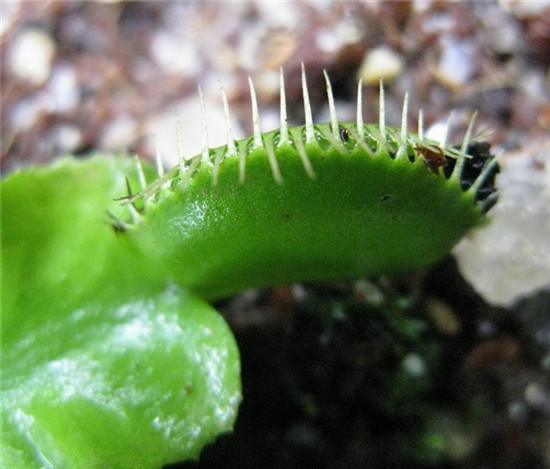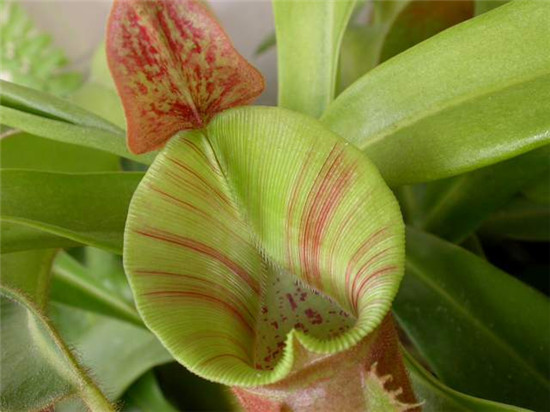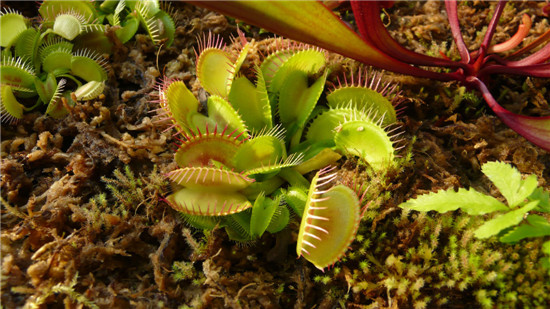What is Insectivorous Plant Insectivorous Plant Introduction
Insectivorous plant is a unique plant on earth, living in this world in a unique way. Next, let's take a look at this insectivorous plant.

There are only a few fossil records on the evolution of insectivorous plants, so the process is not clear. A small number of fossils of insectivorous plants have been found, and most of them are seeds and pollen. Insectivorous plants are herbaceous plants that do not have fossilized structures such as bark or wood. In particular, the structure of its trap is more immature, and it may be missing in fossils for a variety of reasons.
Nevertheless, most of the structures of ancient traps can be inferred from the structure of modern traps. The reconstructed earliest known insectivorous plant, the long-necked ancient bottle grass cage or bottle-shaped leaf trap, is undoubtedly derived from curled and fused leaves. The vascular tissue of bottle grass is a good example.
The front blade of the trap bottle is mixed with vascular bundles from the left and right sides of the bottle, which is in line with the conjecture that the edges of both sides of the original blade fuse toward the axial plane of the blade. The mucus trap gradually evolved from a sticky non-insectivorous leaf, and at the same time, it also evolved from a passive trap to an active trap.
Molecular data show that there is a close relationship between the branch of flycatcher and Drosera. But its trap is so different from the vegetable that it loses its mucus and turns into a fast-moving trap, for which the reason is unknown.

Brief introduction of insectivorous plants
Plants that have the ability to prey on insects are called insectivorous plants. Insectivorous plants generally have the ability to lure, capture, digest insects and absorb insect nutrients, even some frogs, small lizards, birds and other small animals, so they are also called carnivorous plants.
In countries such as Switzerland and Denmark, pansy is also used to make cheese, its leaves are put into buckets, and then filled with milk, the milk solidifies into cheese.
Many countries have made great progress in the use of insectivorous fungi to control nematode diseases in various crops.
Insectivorous plants are autotrophic plants that capture and digest animals to obtain nutrients. Most prey of insectivorous plants are insects and arthropods. It grows in poor soil, especially in areas lacking nitrogen, such as acidic swamps and rocky desertification. In 1875, Charles Darwin published the first paper on insectivorous plants. This insectivorous plant, which can attract and catch prey, produce digestive enzymes and absorb decomposed nutrients, is distributed in 10 families and 21 genera, with more than 630 species. In addition, there are more than 300 genera of plants that have the function of catching insects, but they do not have the ability to digest prey, so they can only be called insect-catching plants. Some pitcher plants occasionally prey on small mammals or reptiles, so insectivorous plants are also called carnivorous plants.

Insectivorous plants are plants that can hunt and digest some insects and arthropods. There are about 600-750 species. Interestingly, although they all have the common skill of catching insects, they are very different in genetic relationship, coming from 10 families and 17 genera in the plant kingdom.
Due to the pressure of their own survival, insectivorous plants embarked on the road of insectivorous counterattack in their own way. In the vast land, not every inch is fertile soil, many places are sandy wasteland, alpine slopes and water areas where nutrients have been lacking for a long time. Various harsh and barren environments have set many obstacles for the survival of plants. For example, some seemingly luxuriant swamps, due to the long-term acidic environment, although the soil is rich in organic matter, it is difficult to decompose into nutrients for plant growth by bacteria. Even in the tropical rainforest known as the "animal and plant paradise", although nature is never stingy with sunshine and rain, under the limited space and resources occupied by tall trees and dense layers of lianas, there is still a fierce competition for the survival of all kinds of plants.

The long-term lack of resources has made some plants learn to use delicious, protein-rich insects and other small animals as a new source of nutrition. However, although the animals are delicious, they are not lambs to be slaughtered. If they do not pay attention to tactics, the worms will not be at their disposal! Fortunately, the stage of nature is quite fair, and she gives these plants the opportunity to evolve freely under the strong pressure of survival. In the long road of evolution, these plants in different environmental regions have developed the best hunting tool with static braking-insect trap. These traps come in different forms but each has its own ingenuity, which fascinates countless scientists and plant enthusiasts.
The above is my summary for you what is insectivorous plants, insectivorous plants introduced all the content, I hope this article can help you. Please continue to follow us.
However, although the animals are delicious, they are not lambs to be slaughtered. If they do not pay attention to tactics, the worms will not be at their disposal! Fortunately, the stage of nature is quite fair, and she gives these plants the opportunity to evolve freely under the strong pressure of survival. In the long road of evolution, these plants in different environmental regions have developed the best hunting tool with static braking-insect trap. These traps come in different forms but each has its own ingenuity, which fascinates countless scientists and plant enthusiasts.
The above is my summary for you what is insectivorous plants, insectivorous plants introduced all the content, I hope this article can help you. Please continue to follow us.
Related
- Wuhan Hospital Iron Tree Blooming Result Was Instantly Frightened by the Gardener Master
- Which variety of camellia is the most fragrant and best? Which one do you like best?
- What is the small blue coat, the breeding methods and matters needing attention of the succulent plant
- Dormancy time and maintenance management of succulent plants during dormancy
- Minas succulent how to raise, Minas succulent plant pictures
- What are the varieties of winter succulent plants
- How to raise succulent plants in twelve rolls? let's take a look at some experience of breeding twelve rolls.
- Attention should be paid to water control for succulent plants during dormant period (winter and summer)
- Watering experience of twelve rolls of succulent plants
- Techniques for fertilizing succulent plants. An article will let you know how to fertilize succulent plants.



